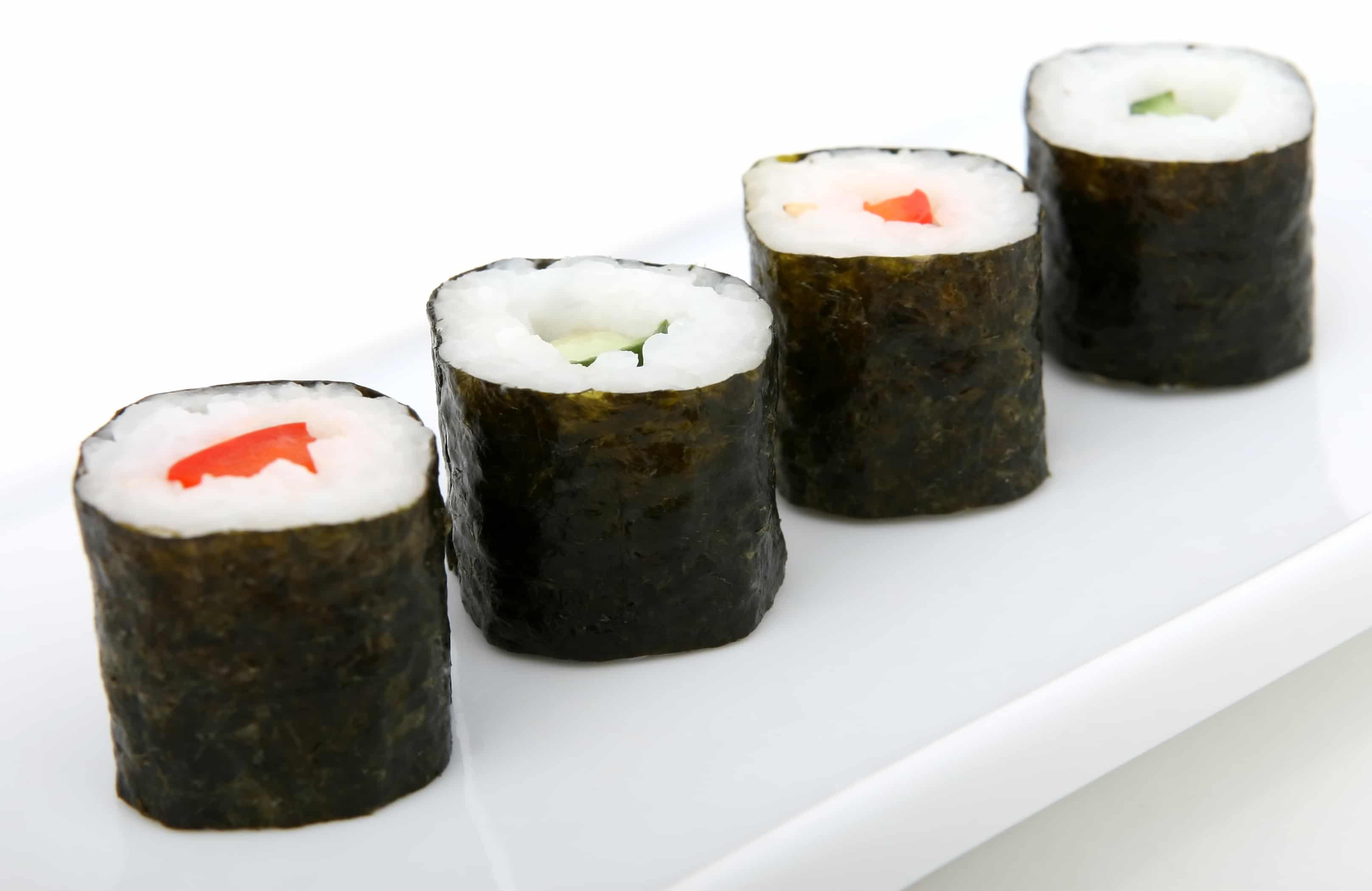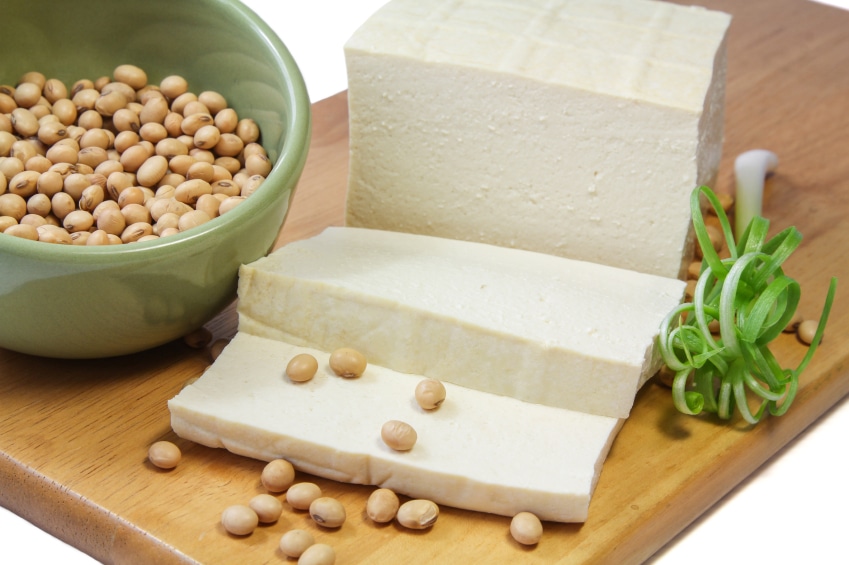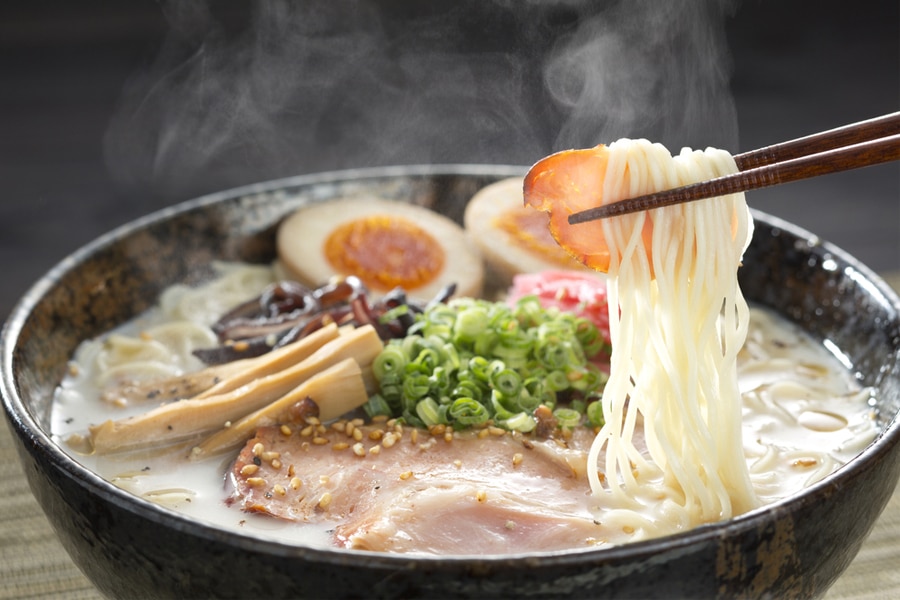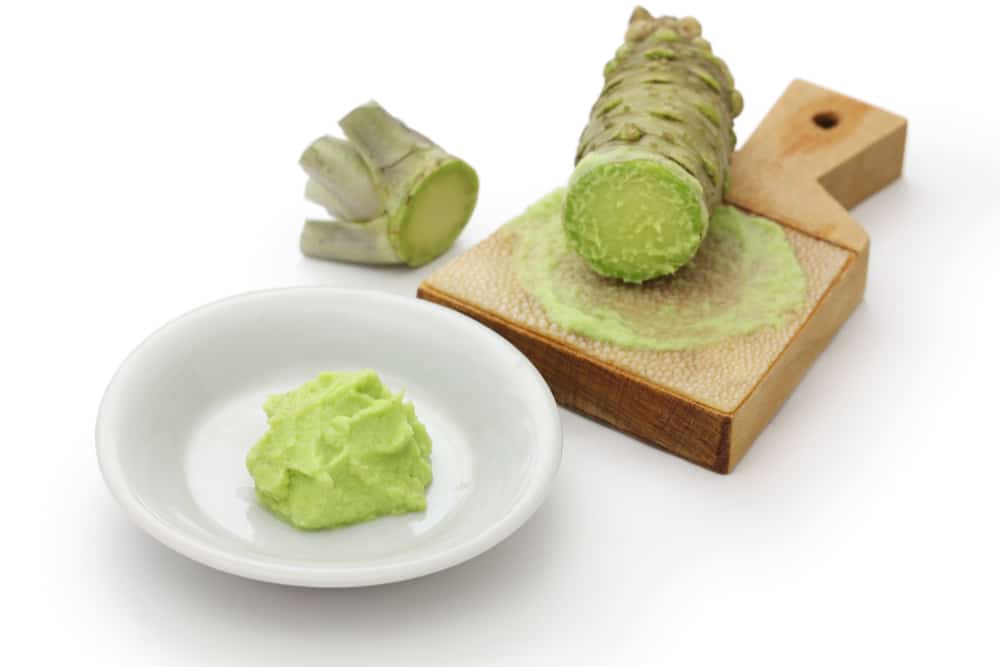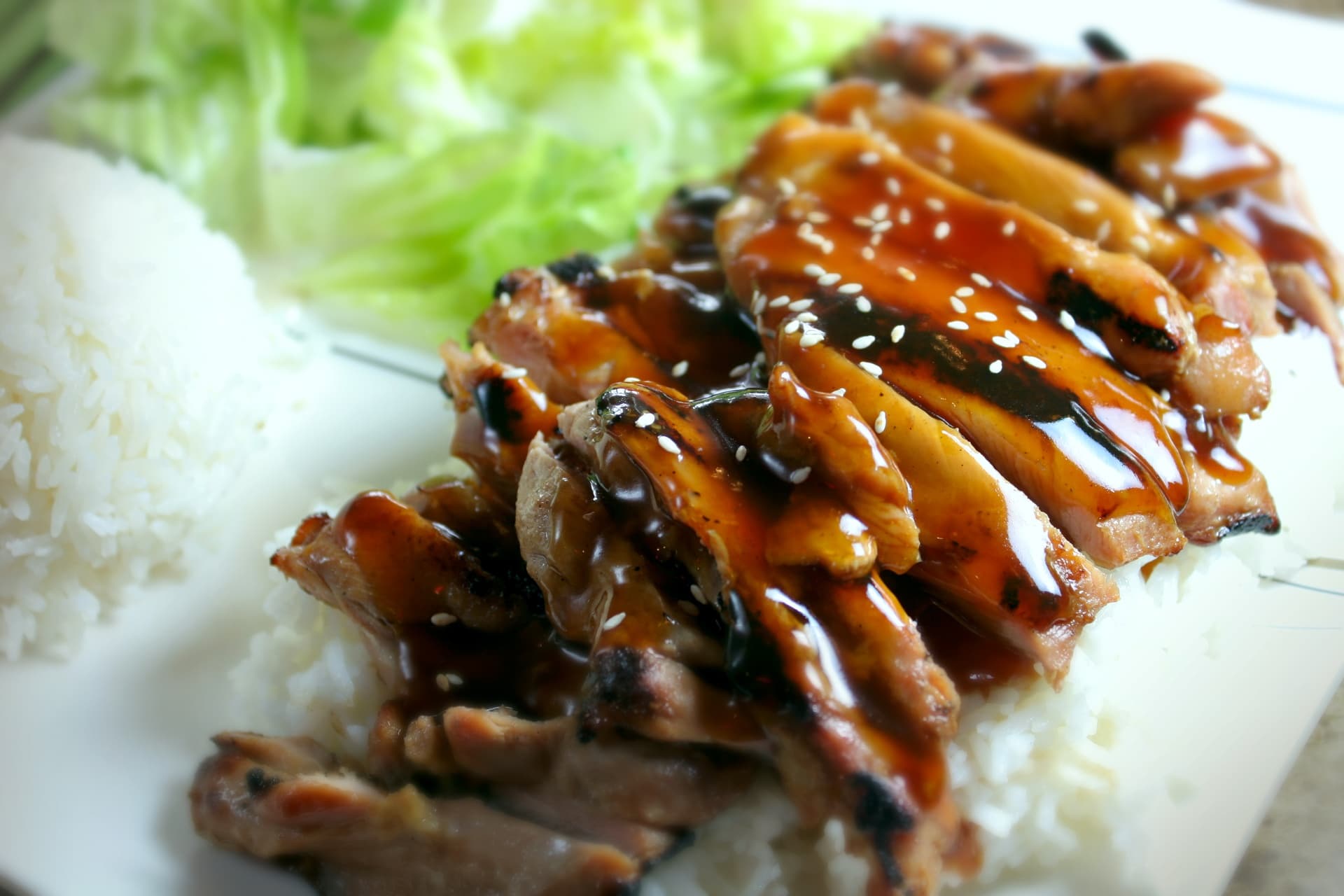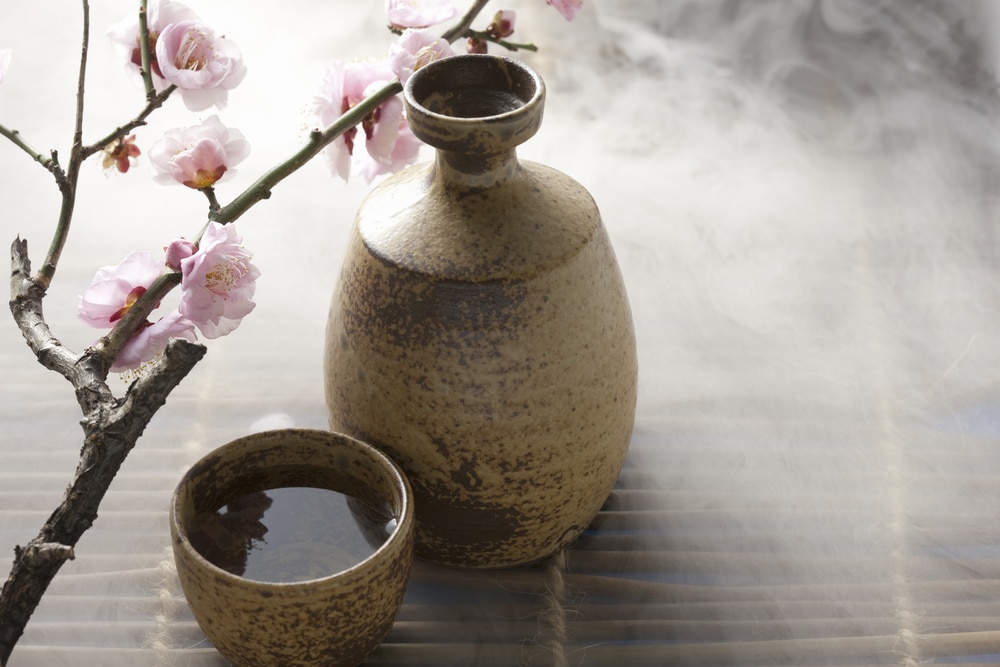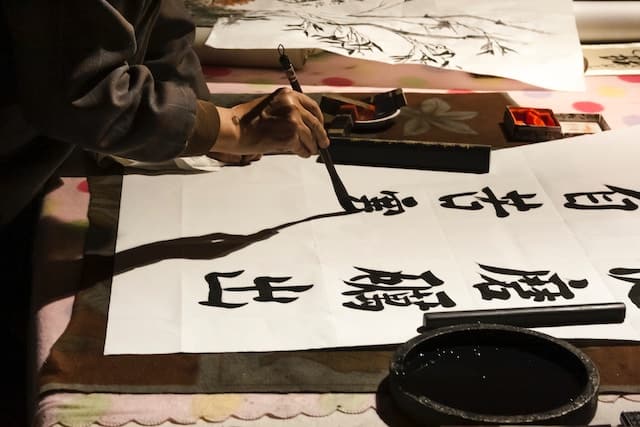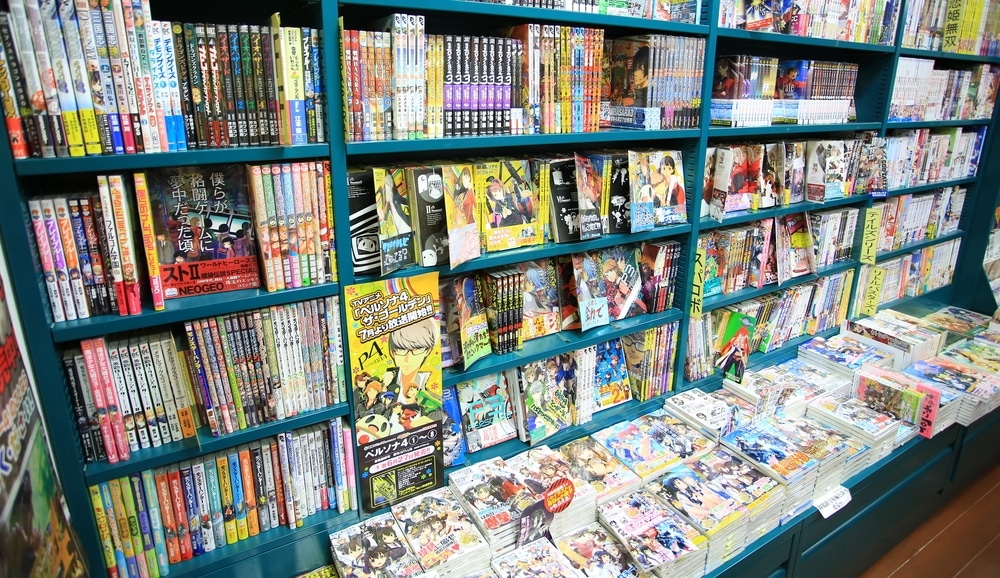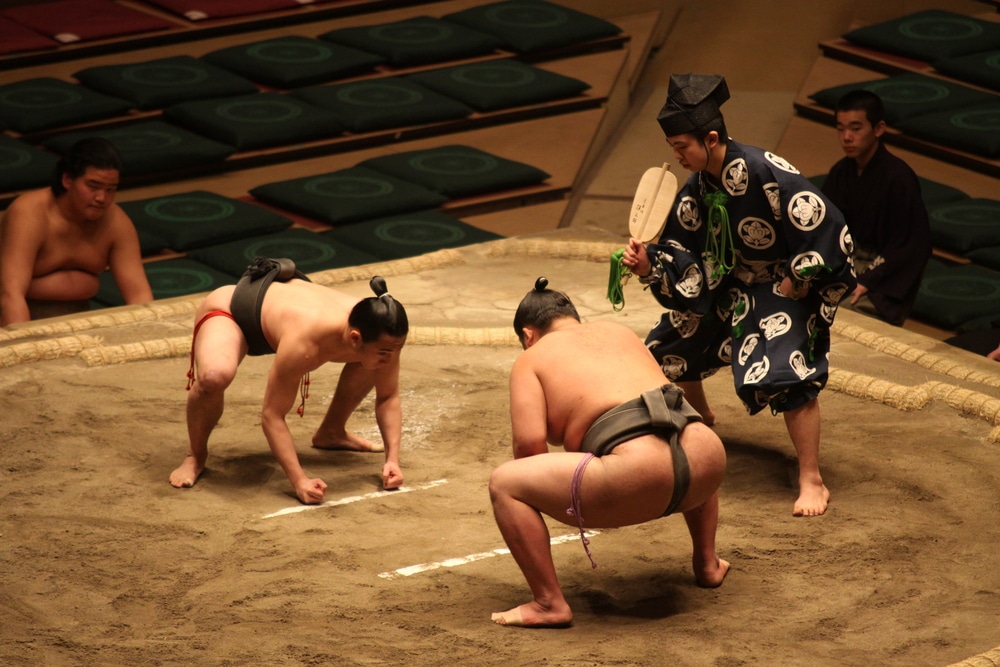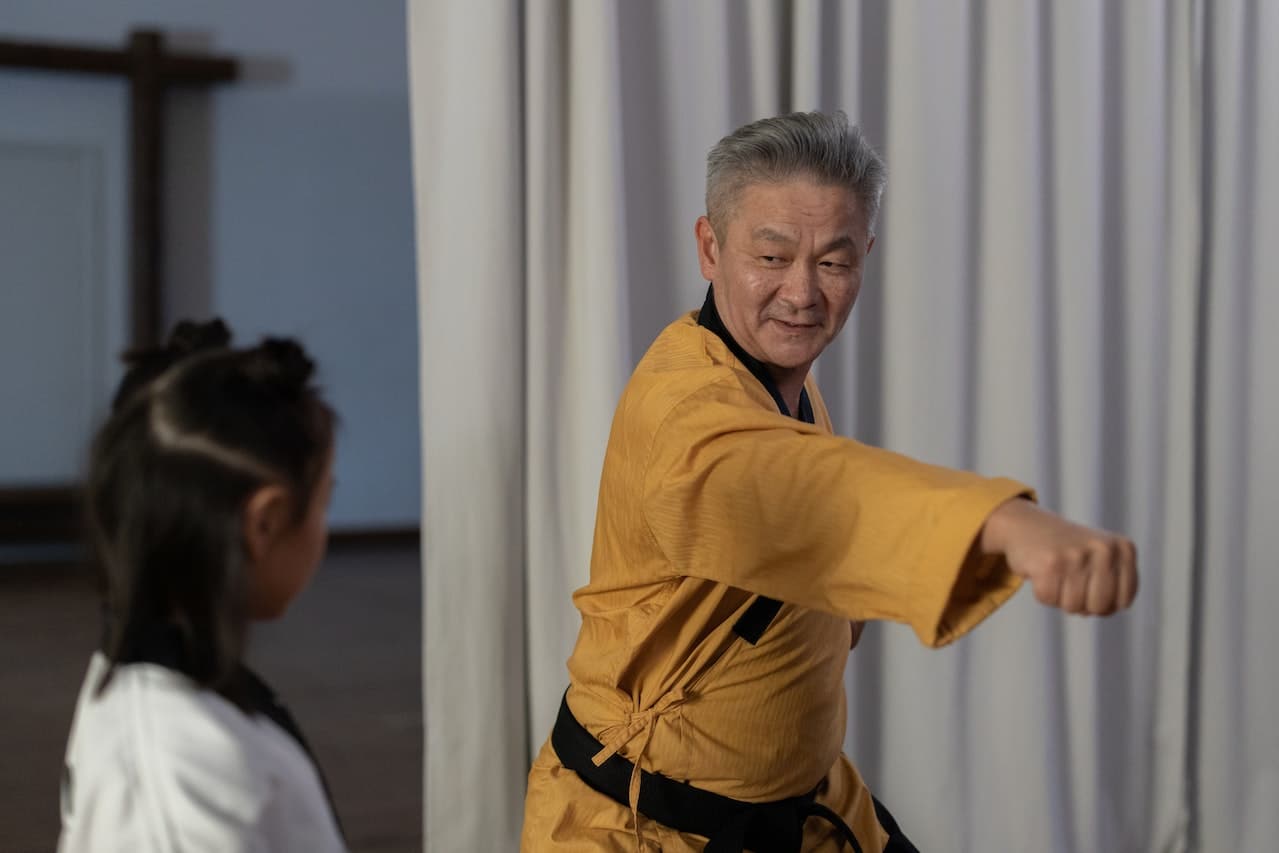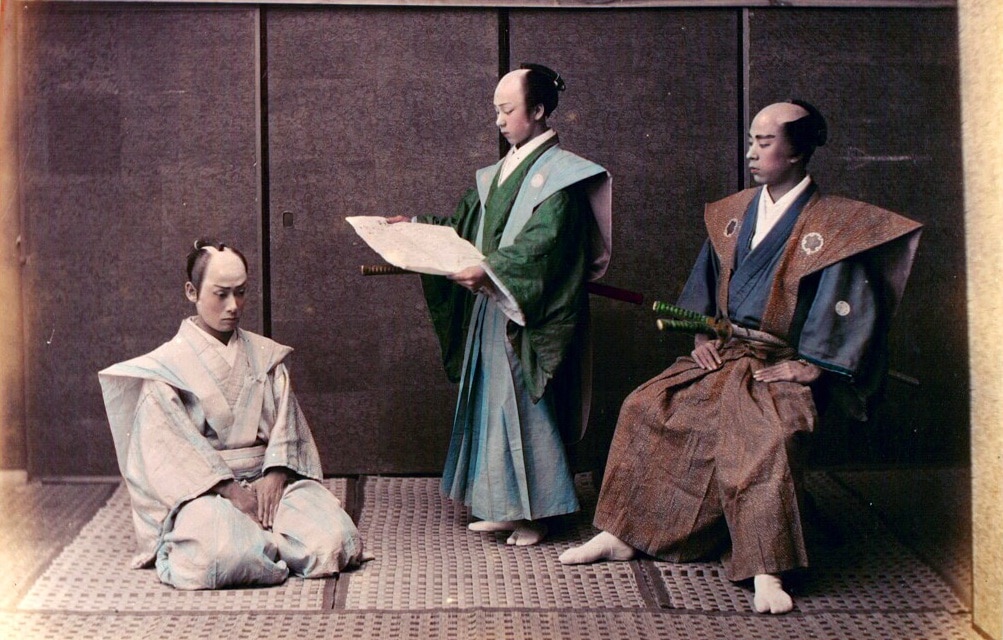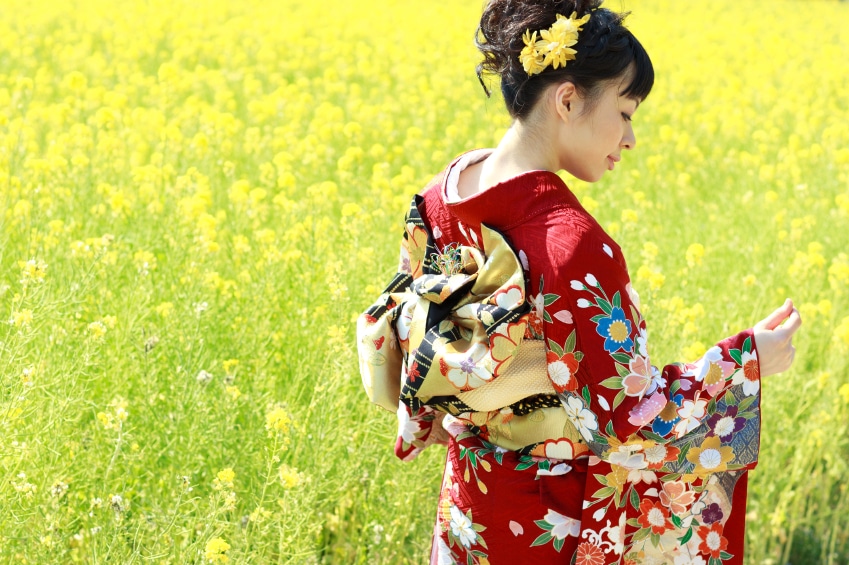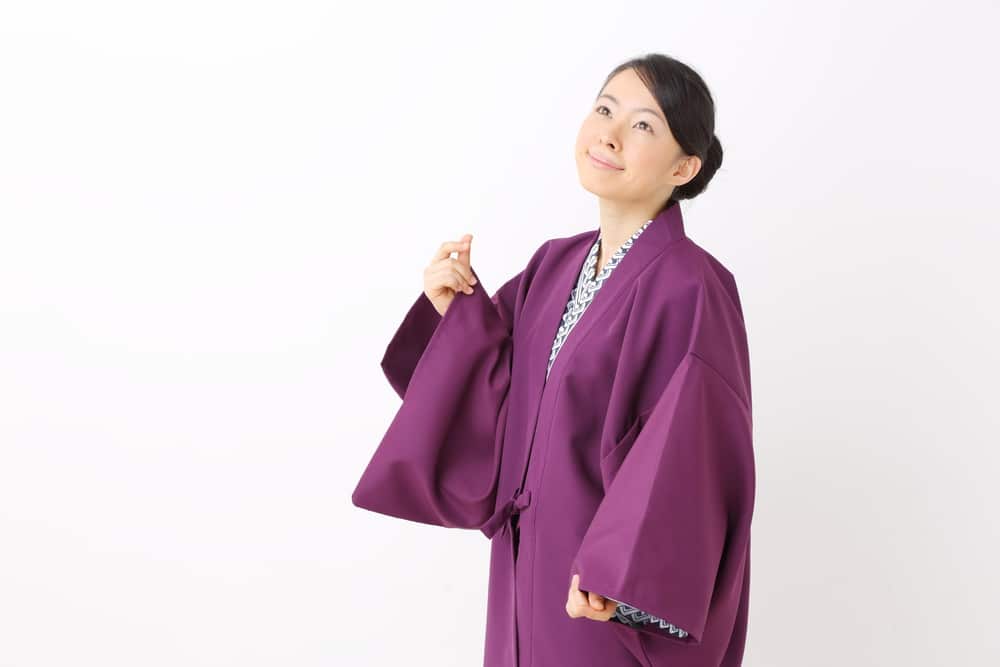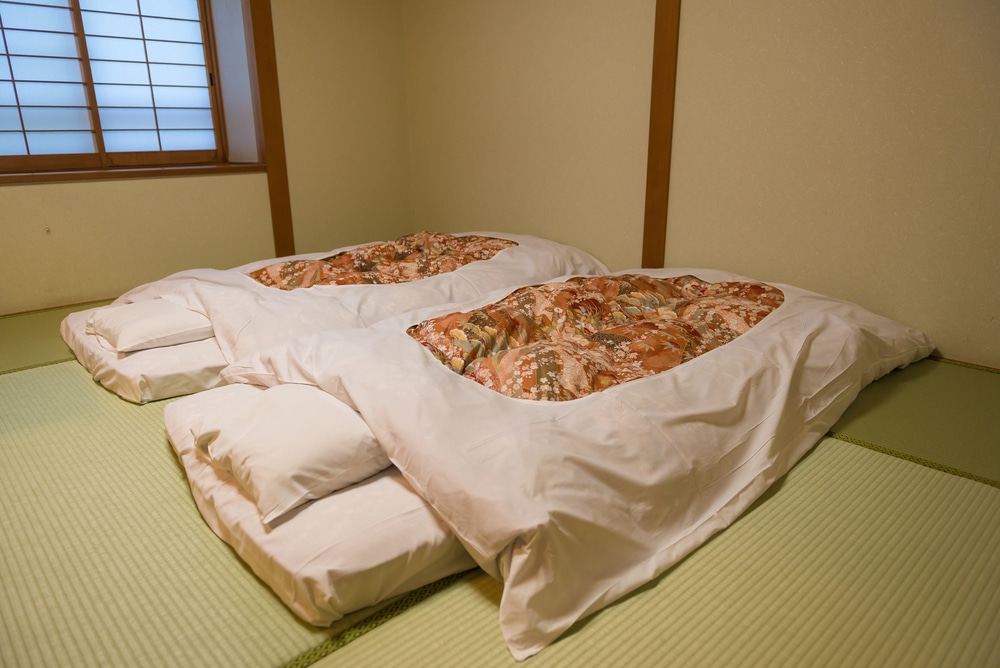
32 Cool Japanese Words We All Use in English
Did you know we use lots of Japanese words in English? It’s true! If you’re learning Japanese, you already have a leg up.
Here, we’ll introduce you to 32 words we use in English that come from Japanese. The original Japanese word, usually written in kanji, is included for each loanword (plus hiragana in parentheses).
You already know these words—add the Japanese meanings and pronunciations, and you’ll be 32 cool Japanese words closer to mastering this difficult but fascinating language!
Contents
Download: This blog post is available as a convenient and portable PDF that you can take anywhere. Click here to get a copy. (Download)
Nature
1. Typhoon
Japanese: 台風 (たいふう)
Kanji meaning: 台 (たい) means “table” or “pedestal,” and 風 (ふう) means “wind.”
English meaning: A tropical cyclone occurring in the northwestern Pacific Ocean.
Example usage: Typhoon Surigae was the strongest tropical cyclone in 2021, but the costliest was Hurricane Ida.
Typhoons are common during late summer and early autumn in Japan, often causing minor damages in the southern Okinawa islands and disrupting transportation in large cities.
2. Tsunami
Japanese: 津波 (つなみ) – In Japanese, the t is pronounced, unlike in English.
Kanji meaning: 津 (つ) is “harbor” or “port,” and 波 (なみ) means “wave.”
English meaning: An unusually large, destructive ocean wave.
Example usage: The town was almost wiped out when the tsunami hit.
Unfortunately, Japan has had more than its fair share of tsunamis. We commonly use the Japanese word to describe these devastating natural disasters in English.
3. Koi
Japanese: 鯉 (こい)
Kanji meaning: 鯉 (こい) just means “carp”—no surprises there!
English meaning: Colored varieties of carp usually kept for ornamental purposes.
Example usage: Please don’t throw pennies in the koi pond. They can make the fish sick.
In English, we sometimes say “koi carp,” but in Japanese, it’s just “koi.” They are largely featured in Japanese decorations as a symbol of love, friendship, or good fortune, and koi-shaped streamers are used in Japanese festivals such as Children’s Day in May.
Food & Drink
4. Sushi
Japanese: 寿司 (すし)
Kanji meaning: 寿 (す) means “congratulations” or “longevity,” and 司 (し) is “official.” If you think about it, it’s quite sweet that the kanji for sushi is “official congratulations!”
English meaning: A dish made from vinegared rice often wrapped with seaweed, and toppings such as raw fish or a type of raw or pickled vegetable.
Example usage: To celebrate your promotion, let’s go out for sushi!
There was no reason to rename this famous Japanese dish. It comes in several forms, but English-speakers are most familiar with makizushi (rolled rice and seaweed with other ingredients inside) and nigirizushi (hand-pressed rice with one ingredient on top).
5. Tofu
Japanese: 豆腐 (とうふ) – In Japanese, the “tou” sound is longer than the “fu,” which is very short.
Kanji meaning: 豆 (とう) is “beans” and 腐 (ふ) means “ferment” or “rot.” It may sound a bit gross, but the Japanese have cleverly mastered several dishes involving fermenting various foods.
English meaning: A soft, white, high-protein food made from curdled soymilk.
Example usage: I’ll have the vegetarian ramen with tofu, please!
Tofu is a delicious addition to many sweet and savory Japanese dishes—as well as dishes in other countries. In Japan, there are still many professional tofu makers.
6. Ramen
Japanese: らーめん , ラーメン
English meaning: A soup of noodles in seasoned broth, other toppings optional.
Example usage: Man, I practically lived on ramen when I was studying for exams.
Ramen is actually a Chinese dish, but has been adapted in Japan and is a long-standing Japanese word. Instant ramen noodles were invented in Japan, and instant or cup ramen is a cheap staple food for college students (and adults) all over the world.
7. Wasabi
Japanese: 山葵 (わさび)
Kanji meaning: 山 means “mountain” and 葵 is “hollyhock.” But 山葵 is ateji, which is kanji used semantically without regard to the readings.
English meaning: Spicy Japanese horseradish often added to sushi and other fish-based dishes.
Example usage: I ate too much wasabi, and it sure cleared out my sinuses!
Wasabi is difficult to grow outside its home ecosystem, so real wasabi is quite a treat—albeit one best appreciated in small amounts! Whether you can get it in your home country or not, most people have heard of wasabi.
8. Teriyaki
Japanese: 照り焼き (てりやき)
Kanji meaning: 照り (てり) means “shine” and 焼き (やき) means “grilled.” Perhaps this kanji was given to it because the sauce glaze makes the chicken look like it’s “shining.”
English meaning: A preparation of meat, especially chicken, broiled or grilled with a particular sweet-savory glaze.
Example usage: Want to try that new teriyaki place tonight?
Japanese teriyaki sauce is made from soy sauce, sugar and rice wine, giving it its unique flavor. Western versions sometimes use other ingredients, such as garlic or pineapple juice. Teriyaki chicken is often served outside Japanese restaurants, meaning that some people may be surprised the word is of Japanese origin.
9. Sake
Japanese: 酒 (さけ)
Kanji meaning: 酒 (さけ) literally means “alcohol.” Add お at the beginning of the kanji (お酒) to describe any alcoholic drink.
English meaning: Japanese alcoholic beverage made from fermented rice.
Example usage: The negotiations went smoothly after a couple rounds of sake.
Aah, sake. The businessman’s best friend and an essential addition to your “new experiences” to try in Japan. Though often referred to as “rice wine,” sake is made with a brewing process more akin to that of beer.
Arts
10. Origami
Japanese: 折り紙 (おりがみ)
Kanji meaning: 折 (おり) means “to fold,” and 紙 (がみ) is “paper.”
English meaning: The art of folding paper into fanciful shapes.
Example usage: We learned how to make origami cranes in Arts and Crafts today.
This old Japanese art literally means “paper folding” and is hugely important in July’s Star Festival in Japan. English-speakers may have heard the story of Sadako Sasaki and the 1,000 paper cranes, which inspired an international children’s peace movement.
11. Shamisen
Japanese: 三味線 (しゃみせん)
Kanji meaning: 三 (しゃ) is “three,” 味 (み) is “flavor” and 線 (せん) means “line” or, in this case, “string.”
English meaning: A stringed musical instrument often featured in traditional Japanese theater.
Example usage: I love the unique sound of the shamisen.
As you might guess from the 三 in its name, the shamisen has three strings. It is played with a special pick called a bachi.
12. Haiku
Japanese: 俳句 (はいく)
Kanji meaning: 俳 (はい) means “poem” or “actor,” and 句 (く) means “clause” or “passage.”
English meaning: A traditional Japanese poem with 17 syllables arranged in three lines, usually 5/7/5.
Example usage: A handful of words, both concise and evocative: I am a haiku.
You may have studied haiku in school, but you may not know that in Japanese, the syllable rules work differently than they do in English.
13. Manga
Japanese: 漫画 (まんが)
Kanji meaning: 漫 (まん) means “random” or “uncontrolled,” and 画 (が) is “picture.”
English meaning: Japanese comic books.
Example usage: Have you seen Tyler’s collection of manga? It’s enormous!
Manga are extremely popular in Japan and beyond. Shelves of these visual stories can be seen not only in libraries and bookshops, but also in restaurants and convenience stores.
14. Anime
Japanese: アニメ
English meaning: Japanese-style animation.
Example usage: The first anime I saw was “Spirited Away,” but my favorite is “Attack on Titan.”
Okay, this one might be cheating a little, since the word “anime” technically comes from the English word “animation”—that’s why it appears in katakana, the writing system of choice for foreign words in Japanese—but it wouldn’t have felt right not to include it. “Anime” is the Japanese word for “cartoon,” and more specifically, Japanese-style animation.
Anime has been the inspiration for many an English-speaker to start learning Japanese. If that describes you, you can take learning from Japanese media to the next level with an immersive learning program like FluentU.
FluentU takes authentic videos—like music videos, movie trailers, news and inspiring talks—and turns them into personalized language learning lessons.
You can try FluentU for free for 2 weeks. Check out the website or download the iOS app or Android app.
P.S. Click here to take advantage of our current sale! (Expires at the end of this month.)

Martial Arts
15. Karate
Japanese: 空手 (からて) – All of the syllables contain the same amount of stress, unlike in English where we say “kah-RAH-tee.”
Kanji meaning: 空 (から) means “empty” and 手 (て) is “hand.” Karate, therefore, is literally battling with no weapons except your bare hands.
English meaning: Often used generically to refer to any Asian martial art.
Example usage: I begged my mom for karate lessons, and she finally said yes!
Karate is a martial art with roots in Chinese fighting, involving complicated strikes using hands, feet and elbows. It is practiced for self-defense, as a sport and as a method of self-development.
16. Judo
Japanese: 柔道 (じゅうどう) – Long “juu” and long “dou” sounds are used in Japanese.
Kanji meaning: 柔 (じゅう) means “gentle” or “soft,” and 道 (どう) is “way” or “road.”
English meaning: A style of martial art known for its “throwing” techniques.
Example usage: He put his opponent on the mat with a cool judo throw.
The difference between karate and judo is that judo is more defensive. Rather than striking your opponent, it involves taking advantage of your opponent’s strength and weight to put them off-balance and then pin them.
17. Sumo
Japanese: 相撲 (すもう) – In Japanese, you’ll want to say a very short “su” and long “mou.” It sounds more like “smou.”
Kanji meaning: 相 (す) means “together” or “mutual,” and 撲 (もう) means “hit” or “beat.”
English meaning: A very unique Japanese martial art which involves enormous wrestlers trying to force each other out of the ring.
Example usage: The life of a sumo wrestler is highly regimented.
Sumo is Japan’s national sport, though its popularity is waning due to competition from sports more accessible to young people. Nowadays, many sumo champions are from Mongolia.
18. Dojo
Japanese: 道場 (どうじょう) – Long “dou” and long “jou.”
Kanji meaning: 道 (どう) means “way” or “road,” and 場 (じょう) is “location” or “place.” It’s the place where you are on the road to improving your skills.
English meaning: A school or practice hall for Japanese martial arts.
Example usage: Meet me in the dojo for karate practice in half an hour.
In Japan, any facility for physical training may be called a dojo. It’s also sometimes used in other fields where one needs a place to practice their “way,” such as in meditation.
People & Groups
19. Otaku
Japanese: お宅 (おたく)
Kanji meaning: 宅 (たく) literally means “house,” and perhaps refers to the tendency “otaku” have to spend a lot of time indoors.
English meaning: Someone with a fascination for Japanese video games, anime and manga. Sometimes derogatory, similar to “geek” or “nerd.”
Example usage: Tyler is a total otaku. He’s obsessed with anime.
In both English and Japanese, “otaku” is often used to describe someone who spends a lot of their free time playing video games, reading manga and watching anime, and who takes little or no interest in more social activities. It is also used by fans of anime and manga to describe others with similar interests.
20. Senpai
Japanese: 先輩 (せんぱい)
Kanji meaning: 先 (せん) means “before” or “ahead,” and 輩 (ぱい) means “comrade” or “companions.” It’s the perfect kanji for this word—literally “companions ahead of me.”
English meaning: A person you admire who is socially or romantically unattainable.
Example usage: Dear diary: Please let senpai notice me.
The word “senpai” is becoming increasingly popular in English, and it’s on the Merriam-Webster Dictionary’s list of “Words We’re Watching” for possible inclusion. “Senpai” in Japanese means someone higher-ranking than you, usually in school, such as a fellow student in a higher grade. In English, it has a similar meaning, often jokingly referring to people the speaker sees as superior, and therefore not noticing their meek and humble selves.
21. Sensei
Japanese: 先生 (せんせい)
Kanji meaning: 先 (せん) remember this kanji? It also came up in “senpai.” It means “before” or “ahead.” 生 (せい) means “born”—your teacher is (usually) born before you.
English meaning: A teacher of a Japanese martial art or spiritual practice.
Example usage: My sensei really helped me find balance in my life.
In Japanese, “sensei” means any type of teacher, whether it be for a public school, a cram school or for sports. 先生 is also an honorific suffix that’s commonly used for doctors, politicians, attorneys, etc.
22. Samurai
Japanese: 侍 (さむらい)
Kanji meaning: 侍 (さむらい) means “to serve” as well as “warrior.” If anything can tell you how long samurai have been around, it’s the fact that this word has an entire kanji for itself.
English meaning: An elite Japanese warrior.
Example usage: Did you know that some famous Spaghetti Westerns were inspired by samurai movies?
The samurai are ancient Japanese warriors with a unique and quite beautiful culture of their own. Real samurai are extinct now, but were so well-known that the word is recognized in English.
23. Ninja
Japanese: 忍者 (にんじゃ)
Kanji meaning: 忍 (にん) means “spy” or “sneak,” and 者 (じゃ) means “person.”
English meaning: A Japanese assassin. Also slang for anyone quick and stealthy.
Example usage: “How did you get here so fast?” “I’m a ninja.”
Ninjas are Japanese assassins, experts in stealth and subtle kills. Whereas samurai were regarded as honorable warriors, the covert methods of the ninja were regarded as dishonorable.
24. Yakuza
Japanese: ヤクザ (やくざ)
Kanji meaning: The name yakuza comes from “八九三” (八/8=ya, 九/9=ku, 三/3=za). It originates from a card game. In this game, a player’s score is decided by adding the scores on several cards and using only the smallest digit. Because 8+9+3=20=0 points, “893” means “no points.” This meaning later changed to “useless people” or “gambling people.”
English meaning: The Japanese Mafia.
Example usage: I don’t want any trouble with the yakuza.
Most people have heard of the Japanese Mafia thanks to movies such as “Kill Bill,” “Battles Without Honor and Humanity” and “Fast and Furious: Tokyo Drift.” Today, the yakuza are still very active and powerful in areas such as Tokyo.
Miscellaneous
25. Karaoke
Japanese: カラオケ (からおけ) – Forget everything you know about the English pronunciation of this word, as I’m afraid we’ve butchered it. Follow the katakana to the letter (literally).
Kanji meaning: As seen above, “karaoke” is now usually written in katakana in Japanese, such as on signs and buildings. However, the word originally came from the kanji 空 (から), meaning “empty,” and the katakana オケ, coming from the English “orchestra.” So, if you think about it, “karaoke” is an English word adopted from Japanese, but which originally had influences from English—or from Greek, if you want to get really linguistically technical.
English meaning: Singing to a piece of music with the original vocals removed, usually at a club or bar (hence “karaoke bar”). There are also home karaoke systems.
Example usage: Want to hang out with us tonight? We’re going to do karaoke!
Karaoke is an entirely different experience in Japan, and can be enjoyed alone, as a small group of friends or, similar to Western style, with loud and drunken strangers.
26. Emoji
Japanese: 絵文字 (えもじ)
Kanji meaning: 絵 (え) means “picture” and 文字 (もじ) is “character” or “letter.”
English meaning: The little pictures you can use on your smartphone or computer to communicate an emotion or message.
Example usage: You can say so much with an emoji.
This actually originally came from Japanese, literally meaning “pictograph.”
27. Shiatsu
Japanese: 指圧 (しあつ)
Kanji meaning: 指 (し) means “finger” and 圧 (あつ) is “pressure.”
English meaning: A Japanese style of bodywork.
Example usage: I get shiatsu every other week to help my back pain.
You may have seen the word “shiatsu” outside massage parlors. This style of bodywork uses assisted stretching and acupressure in addition to more familiar massage. It is said to support the body’s natural defenses, helping people to heal and balance themselves in mind, body and spirit.
28. Zen
Japanese: 禅 (ぜん)
Kanji meaning: 禅 (ぜん) literally means “silent meditation.”
English meaning: A spiritual practice involving meditation. Casually, anything perceived as peaceful and perhaps mystical.
Example usage: I love coming this garden; it’s very Zen.
Zen is a branch of Buddhism that emphasizes self-control and the release of ego. Through the practice of Zen meditation, one is said to gain insight into the true nature of things.
29. Kimono
Japanese: 着物 (きもの)
Kanji meaning: 着 (き) means “to wear” and 物 (もの) means “thing” or “goods.” It makes sense, then, that kimono literally means “something to wear.”
English meaning: A distinctly Japanese style of over-garment.
Example usage: Her kimono is gorgeous!
A kimono is a traditional Japanese garment nowadays worn mostly by female entertainers (geisha) and at festivals and graduation ceremonies.
30. Yukata
Japanese: 浴衣 (ゆかた)
Kanji meaning: 浴衣 is another ateji, but 浴 means “bathe” or “bask,” and 衣 means “clothing.” Yukata were originally worn as bathrobes.
English meaning: A Japanese dressing gown or light robe.
Example usage: I got this yukata when I visited a Japanese hot spring last year.
A yukata is actually a casual form of kimono. It tends to involve less layers, and therefore is usually worn in summer. It also retains its original use as a bathrobe in onsen (hot spring) towns.
31. Futon
Japanese: 布団 (ふとん) – Say a very short “u”; it sounds more like “fton” in Japanese.
Kanji meaning: 布 (ふ) means “linen” or “cloth” and 団 (とん) is “group.”
English meaning: A mattress filled with layers of cotton batting, usually encased in cotton fabric. Often part of a couch that can be folded upright for sitting or flat for sleeping.
Example usage: This futon is a bit lumpy, but it’s better than the floor!
Futons have been a traditional bed in Japan for centuries, therefore it’s unsurprising that English speakers borrowed this word to describe them. Japanese futons are flexible enough to be completely folded and stored in a closet when not in use.
32. Tatami
Japanese: 畳 (たたみ)
Kanji meaning: 畳 (たたみ) means “tatami,” but can also mean to “shut” or “put away.”
English meaning: A thick, woven rush mat with a soft filling.
Example usage: Sitting on a tatami takes some getting used to.
Tatami are a comfortable addition to many Japanese homes and usually recognizable to foreign eyes. In English, we tend to say the phrase “tatami mat,” but in Japanese it’s just “tatami.”
With these English-Japanese words you already know, there’s a plethora of Japanese vocabulary stored away in your brain—no studying required.
Japanese is a rewarding language to learn, and there are hundreds of ways to easily study it. This just happens to be one of the easiest ways out there.
Keep exploring loanwords, as well as other connections between Japanese and English, as you advance with your new language. You won’t regret it.
Good luck!
Download: This blog post is available as a convenient and portable PDF that you can take anywhere. Click here to get a copy. (Download)
And One More Thing...
If you love learning Japanese with authentic materials, then I should also tell you more about FluentU.
FluentU naturally and gradually eases you into learning Japanese language and culture. You'll learn real Japanese as it's spoken in real life.
FluentU has a broad range of contemporary videos as you'll see below:

FluentU makes these native Japanese videos approachable through interactive transcripts. Tap on any word to look it up instantly.

All definitions have multiple examples, and they're written for Japanese learners like you. Tap to add words you'd like to review to a vocab list.

And FluentU has a learn mode which turns every video into a language learning lesson. You can always swipe left or right to see more examples.

The best part? FluentU keeps track of your vocabulary, and gives you extra practice with difficult words. It'll even remind you when it’s time to review what you’ve learned. You'll have a 100% personalized experience.
Start using the FluentU website on your computer or tablet or, better yet, download the FluentU app from the iTunes or Google Play store. Click here to take advantage of our current sale! (Expires at the end of this month.)



